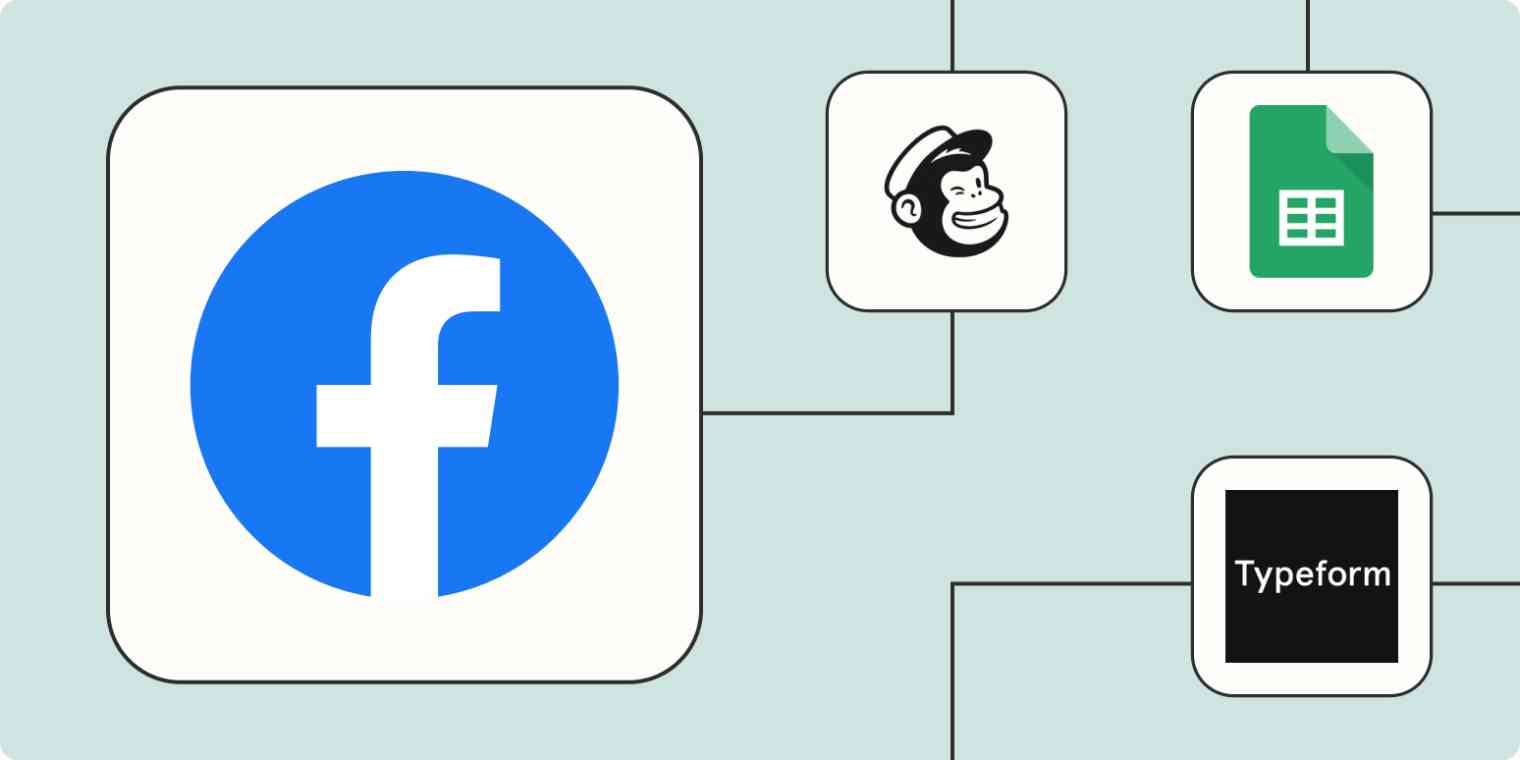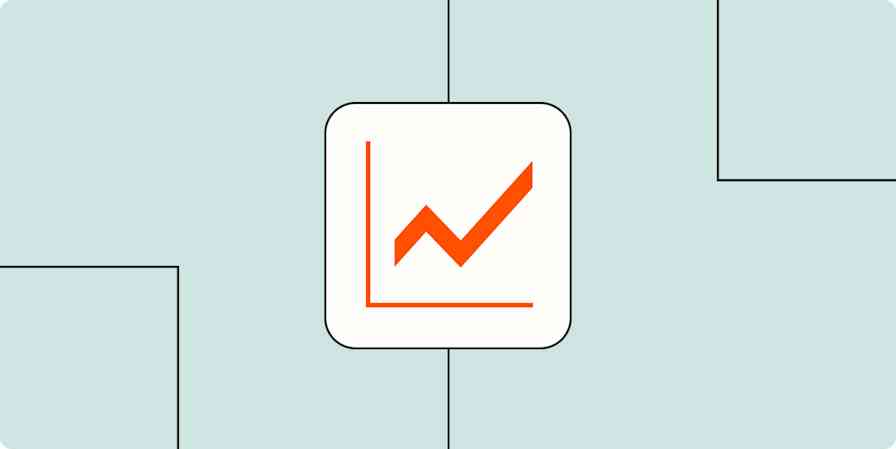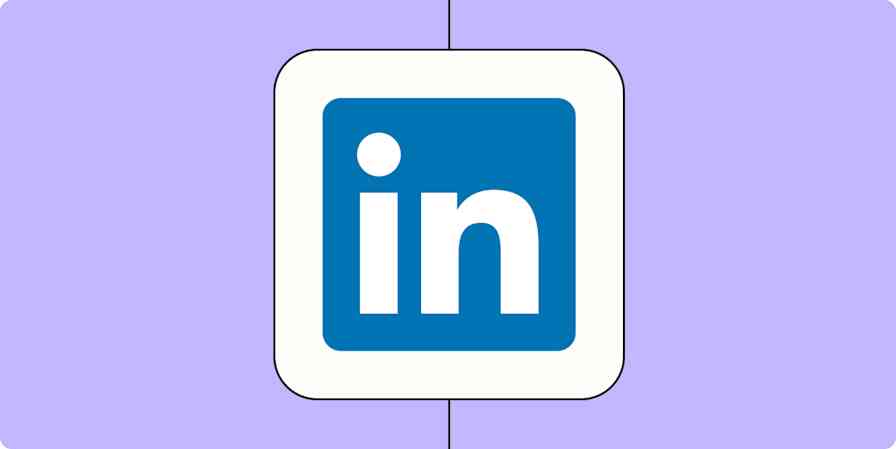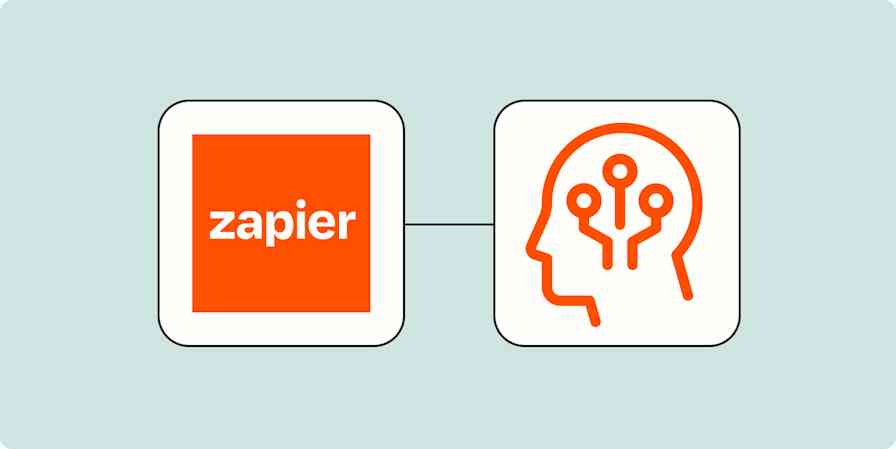With 2.96 billion monthly active users, Facebook offers a massive audience of potential customers for brands and businesses of all sizes. And with Facebook Ads, you can create and run digital ad campaigns to directly market your business to those potential customers. But if you want to get the most bang for your buck, you should make sure those ads actually reach the Facebook users most likely to be interested in what you have to offer.
That's where Facebook Custom Audiences comes in. You can use this feature to curate groups of people who already have a relationship with your business—or non-customers who might be interested—which you can then engage with targeted marketing campaigns.
And when you pair Facebook Custom Audiences with automation through Zapier, you can make better use of your data and target Facebook ads more effectively. Here's how.
Facebook Custom Audiences is a premium app—available on Zapier's paid plans. Learn more about premium apps.
Skip ahead
Zapier is the leader in workflow automation—integrating with 6,000+ apps from partners like Google, Salesforce, and Microsoft. Use interfaces, data tables, and logic to build secure, automated systems for your business-critical workflows across your organization's technology stack. Learn more.
The 4 types of Facebook Custom Audiences
Not all Custom Audiences are created equal. Depending on your offering and industry, you might choose to create different types of audiences—or even different audiences for different types of ads. There are four common ways to build these targeted lists.
1. Custom Audiences from customer lists
If you collect email addresses, such as when someone subscribes to your newsletter or makes a purchase, you can upload that information to Facebook and target them with ads on the platform. When you upload your email list, Facebook uses "hashing" to match the email addresses with user profiles while keeping specific customer data private.
Keep in mind that you can only upload data from customers who have permitted you to market to them. For example, you can't use an email list you've purchased or data you've gathered from other websites. Also, if someone opts out of your email list, you need to remove them from your Custom Audience, too.
Most countries have restrictions around how you collect, store, and share audience data, so you should double-check your region's regulations before you delve into email marketing and Facebook ads.
2. Custom Audiences from your website
You can also target website viewers on Facebook if you install the Meta pixel (previously called the Facebook Pixel) on your website. The pixel is a small piece of code that measures customer actions so you can build Custom Audiences. Then Facebook can match your website visitors to their Facebook profiles.
You can then use this information to create Custom Audiences that include all your website visitors or generate smaller groups targeting people who have visited a specific product page or product category. For example, you might target customers who have looked at your shoe category with ads of different types of shoes.
3. Custom Audiences from engagement
An engagement Custom Audience is a group of users who have interacted with your brand on other Meta platforms, such as Instagram or Facebook. For example, different engagement types include watching a video on your page, filling out a lead form, visiting your Facebook Page or Instagram business profile, or registering for an event.
By targeting those users, Facebook allows you to nurture customers who are already aware of your brand and more likely to convert.
4. Custom Audiences from app activity
The fourth type of Custom Audience on Facebook is related to app activity. If you have an app for your business, you can pass data to Meta (aka Facebook) about those users.
For example, you might create an ad on Facebook to remind users who've downloaded your app to sign in, view a sale, or upload a review. Note, the targeting options for this type of Custom Audience can be limited based on your location and the age of your target audience. Children or audiences living in Europe may have limited reach based on new privacy rules.
You can also target your existing customers with a Custom Audience. Learn how to use your customer list to create Custom Audiences on Facebook.
Why you should use automation to build your Facebook Custom Audiences
It's no secret that marketing to existing customers and followers can produce much higher conversion rates than trying to reach people who have never bought from you or haven't even heard of your brand.
It's also more cost-effective—it can cost five times more to attract a new customer than retain an existing one.
However, manually creating Custom Audiences from spreadsheets and forms can be a time-consuming chore. With a Zap—our word for Zapier's automated workflows—you can cut out the manual work and sync your data with Facebook Custom Audiences automatically. That way, your ads will always target your most recent subscribers and customers, and nobody falls through the cracks.
Add email subscribers to your Custom Audience
If you use email platforms like MailChimp or ActiveCampaign to keep in touch with customers, you can create a Zap to automatically add new subscribers to a Facebook Custom Audience.
Add new Mailchimp subscribers to Facebook Custom Audiences
Add emails to custom audiences in Facebook Custom Audiences when links receive new clicks in Mailchimp
Add email addresses to Facebook Custom Audiences when new ActiveCampaign contacts are added to lists
Add emails to Facebook Custom Audiences for new subscribers in ConvertKit
You can also create a custom audience if a new customer is tagged in ConvertKit. For example, if you have two or more different subscriber lists, you can add newly tagged subscribers to a specific Facebook Custom Audience.
Add emails to Facebook Custom Audiences for new tagged subscribers in ConvertKit
Add users to a Custom Audience from a form
If you collect email addresses through form apps like Gravity Forms or Typeform, you can use those emails to create Custom Audiences in Facebook ads. For example, if you asked customers to fill out a form providing feedback about a new product launch, you could later target those emails on Facebook when you launch.
Add emails from new Typeform entries to Facebook Custom Audiences
Add emails from new Jotform submissions to Facebook Custom Audiences
Add emails to Facebook Custom Audiences from new Gravity Forms submissions
Build Custom Audiences from product purchases
If you create a Custom Audience from a Shopify, Kajabi, or WooCommerce customer list, you can target past customers with Facebook ads.
For example, you could create campaigns with special offers for repeat clients or let people know when you release a new version of a product they already own by adding new customers to a Facebook Custom Audience.
Log emails in Facebook Custom Audiences with new WooCommerce orders
Add emails to Facebook custom audiences from new Kajabi purchases
Log emails in Facebook Custom Audiences with new paid orders in Shopify
Learn more about how to use customer lists to create Facebook custom audiences.
Add new leads to a Facebook Custom Audience
Facebook Lead Ads allow you to collect lead data from forms users fill out on Facebook. These leads are highly motivated and have already engaged with your brand on Facebook, making them prime targets for Facebook ads.
For example, if someone fills out a Facebook Lead Ad to download a demo or an eBook, you can target them later in a custom audience.
Add emails from new Facebook Lead Ads leads to Facebook Custom Audiences
Build Custom Audiences from a spreadsheet
If you're using Google Sheets to collect audience data, such as with a Google Form, you can use Zapier to connect your spreadsheet to Facebook Custom Audiences.
Here's a Zap that will automatically add email addresses from a Google Sheet to a Facebook Custom Audience.
Add emails to Facebook Custom Audiences for new or updated rows in Google Sheet
Add new CRM contacts to a Custom Audience
Do you use a CRM like Salesforce to keep track of leads and customers? With these Zaps, you can automatically add existing leads or contacts to your Custom Audience.
Add new Salesforce contacts to a Facebook custom audience
Add new contacts in HubSpot to a Facebook Custom Audience
Add tagged emails on Keap Max Classic to Facebook Custom Audiences
Add users to a Custom Audience from a webhook
Zapier connects with thousands of apps. But if the specific app you want to use isn't on Zapier or you want to customize your Zap outside of an integration's available triggers and actions, you can use webhooks to pull in additional data to Facebook Custom audiences.
Add email addresses to Facebook Custom Audiences with new received webhooks
Drive Facebook ad conversions with targeted Custom Audiences
Facebook Custom Audiences lets you create laser-focused remarketing ads for a wide variety of custom segments, from leads to customers and even website visitors. You can use these audiences to remind people about products they're interested in or recover abandoned shopping carts.
Facebook Custom Audiences is a powerful marketing tool for businesses of all sizes, but don't let the chore of creating audiences from scratch hold you back from giving it a try. Add Zapier to the mix, and you can streamline the process by automatically sending customer data from the other apps in your toolkit to Facebook so you can reach the people most important to you.
Related reading:
This article was originally published in January 2021, written by Jasmine Williams. It was most recently updated by Danielle Antosz in April 2023.





